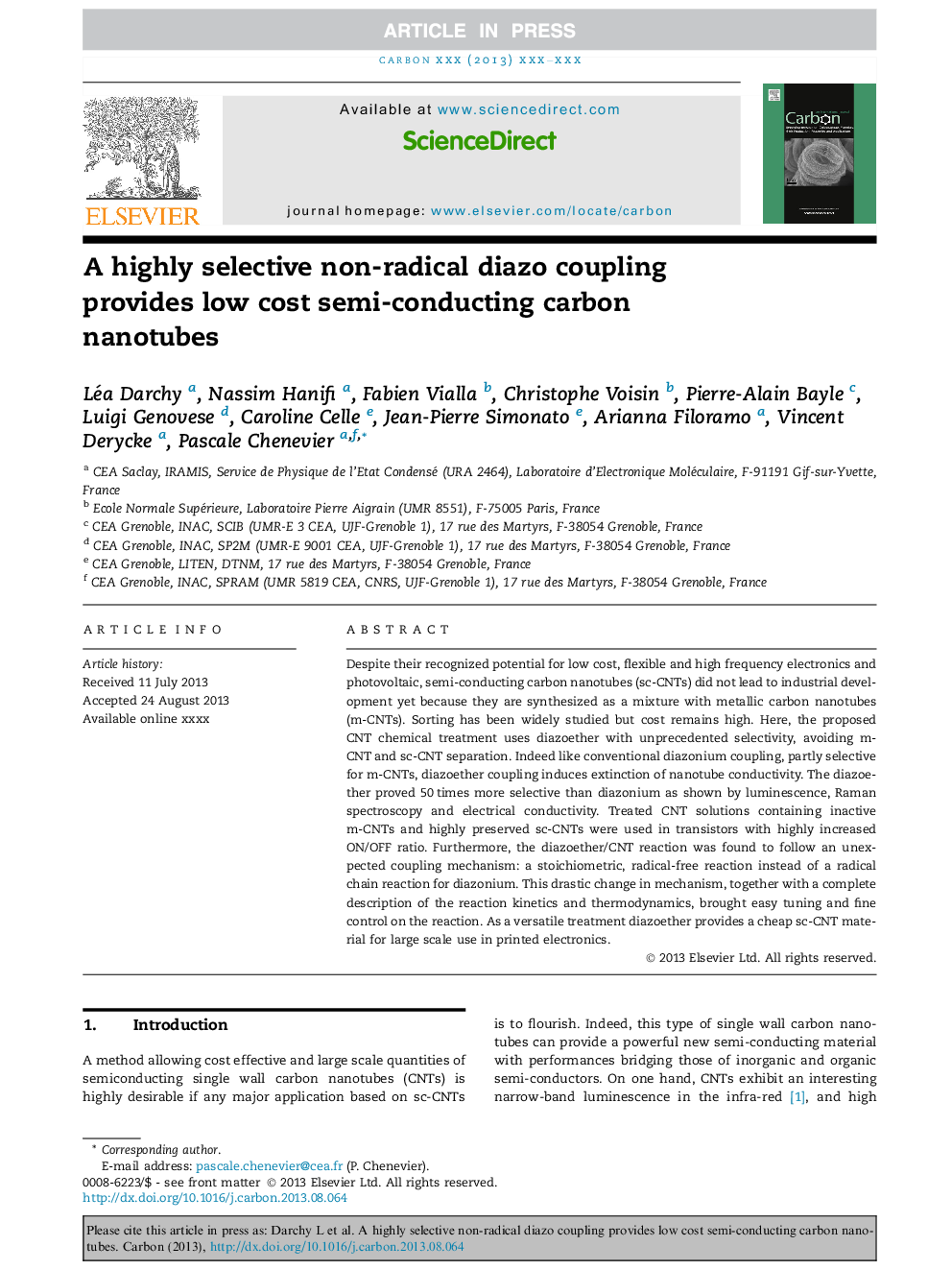| Article ID | Journal | Published Year | Pages | File Type |
|---|---|---|---|---|
| 7855359 | Carbon | 2014 | 13 Pages |
Abstract
Despite their recognized potential for low cost, flexible and high frequency electronics and photovoltaic, semi-conducting carbon nanotubes (sc-CNTs) did not lead to industrial development yet because they are synthesized as a mixture with metallic carbon nanotubes (m-CNTs). Sorting has been widely studied but cost remains high. Here, the proposed CNT chemical treatment uses diazoether with unprecedented selectivity, avoiding m-CNT and sc-CNT separation. Indeed like conventional diazonium coupling, partly selective for m-CNTs, diazoether coupling induces extinction of nanotube conductivity. The diazoether proved 50Â times more selective than diazonium as shown by luminescence, Raman spectroscopy and electrical conductivity. Treated CNT solutions containing inactive m-CNTs and highly preserved sc-CNTs were used in transistors with highly increased ON/OFF ratio. Furthermore, the diazoether/CNT reaction was found to follow an unexpected coupling mechanism: a stoichiometric, radical-free reaction instead of a radical chain reaction for diazonium. This drastic change in mechanism, together with a complete description of the reaction kinetics and thermodynamics, brought easy tuning and fine control on the reaction. As a versatile treatment diazoether provides a cheap sc-CNT material for large scale use in printed electronics.
Related Topics
Physical Sciences and Engineering
Energy
Energy (General)
Authors
Léa Darchy, Nassim Hanifi, Fabien Vialla, Christophe Voisin, Pierre-Alain Bayle, Luigi Genovese, Caroline Celle, Jean-Pierre Simonato, Arianna Filoramo, Vincent Derycke, Pascale Chenevier,
